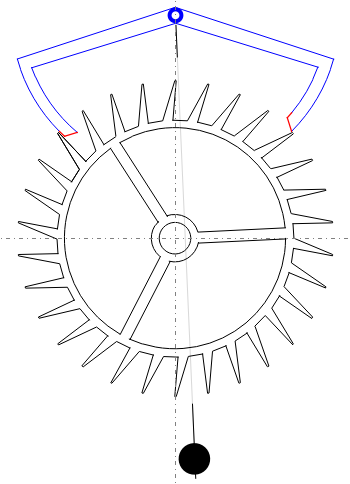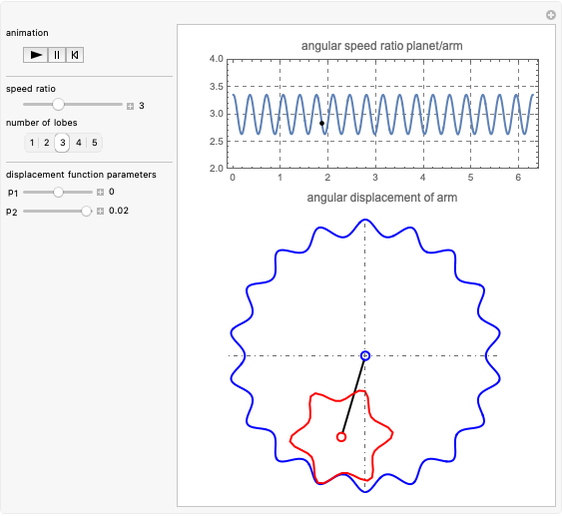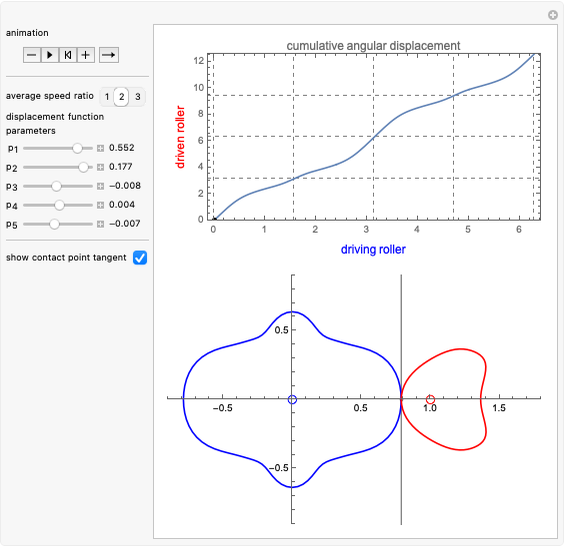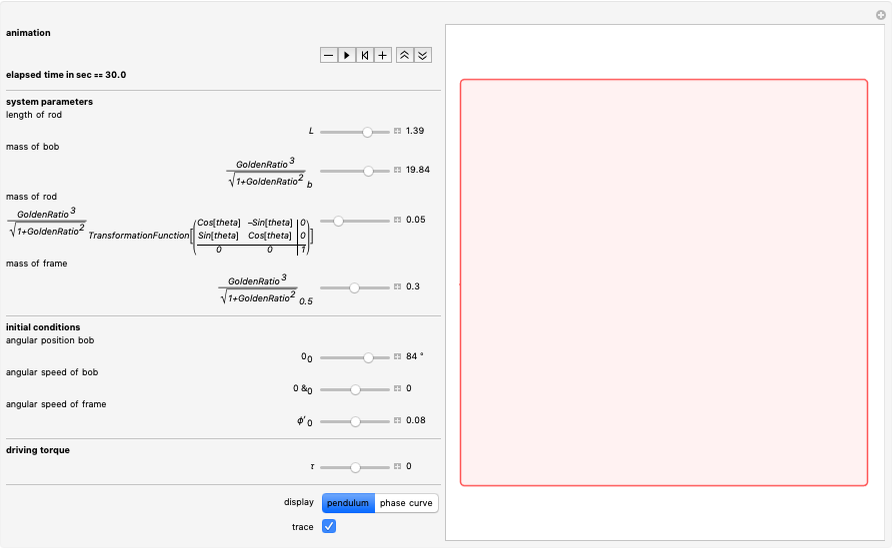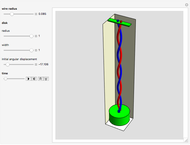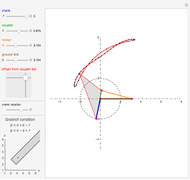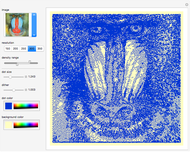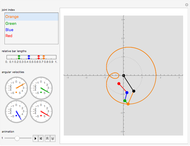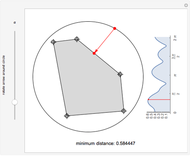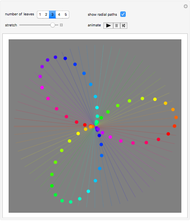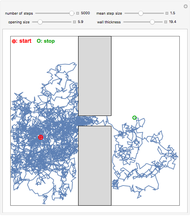The Graham Clock Escapement

Requires a Wolfram Notebook System
Interact on desktop, mobile and cloud with the free Wolfram Player or other Wolfram Language products.
A clock escapement regulates the progress of the gear train that eventually moves the clock hands. The escapement effectively counts the number of swings made by the pendulum.
[more]
Contributed by: Erik Mahieu (January 2013)
Open content licensed under CC BY-NC-SA
Snapshots
Details
A basic clock escapement consists of an anchor and an escape wheel. The pallets at the end of the anchor's arms (in red in this Demonstration) are the essential parts of an escapement. Their shape and position greatly determine its effectiveness. Two angles, measured as drawn from the axis of the anchor, are important: the impulse angle determines the time the escape wheel is moving, and the lock angle sets the time the wheel is stopped. To allow for geometrical conflicts or mechanical inaccuracies, a "drop angle" can be added to the anchor's movement.
For a complete treatise on clock escapements, see [1].
Reference
[1] M. V. Headrick. "Clock and Watch Escapement Mechanics." (1997) www.abbeyclock.com/EscMechanics.pdf.
Permanent Citation
